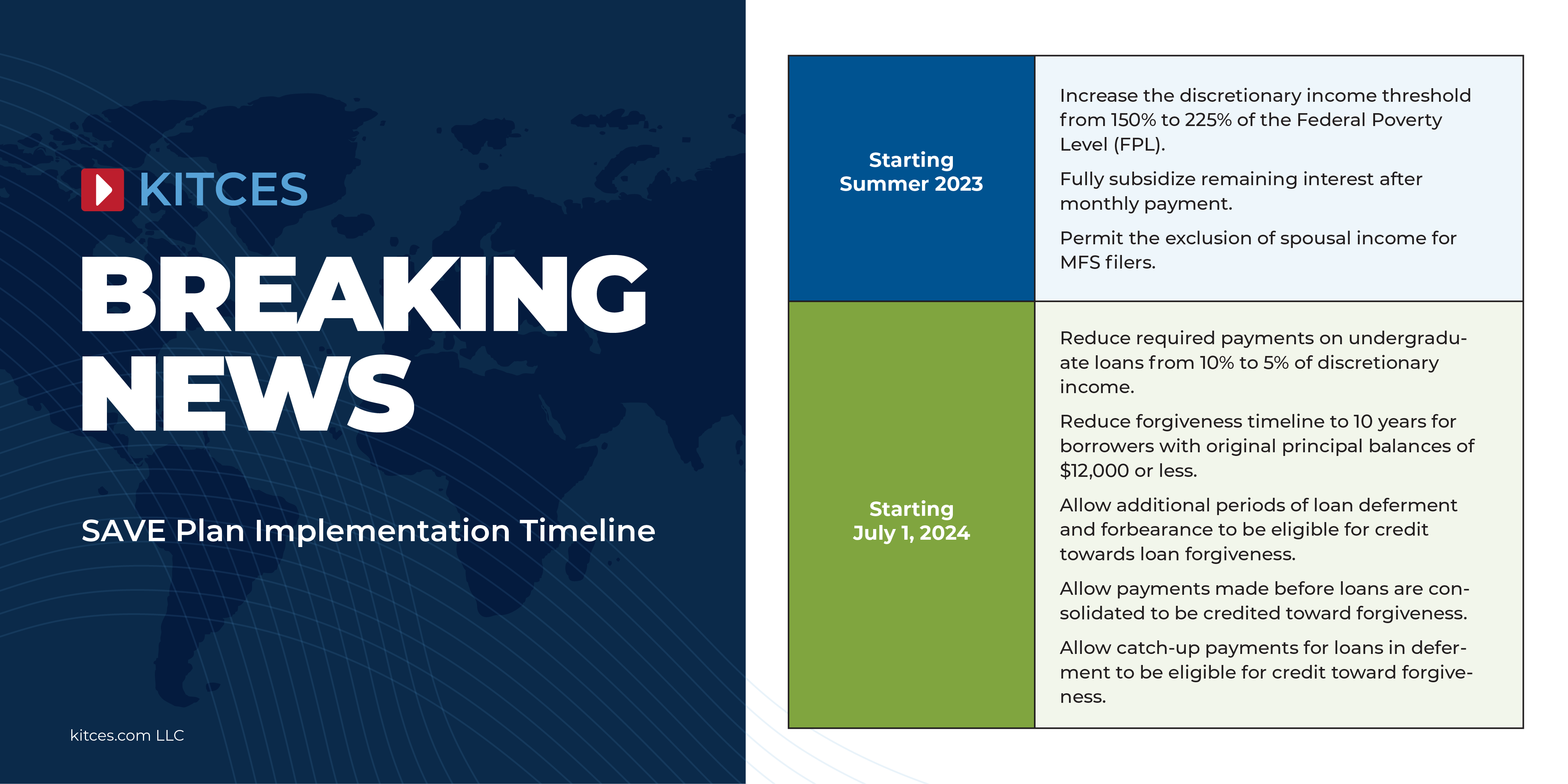Last year, the Biden Administration announced a sweeping package of student loan relief programs intended to ease the pressure on borrowers affected by the skyrocketing student debt of recent years. The two key pillars of the administration’s package were a proposed one-time cancellation of up to $10,000 of Federal student debt per borrower, and a new Income-Driven Repayment (IDR) plan featuring much more borrower-friendly terms than previously existing IDR plans. Fast forward to this summer, and the U.S. Supreme Court has struck down the loan forgiveness portion of the administration’s plan. However, the new IDR plan (named the Saving on A Valuable Education, or SAVE Plan) is still moving forward, and in response to the Supreme Court’s decision, the Biden administration has released its final regulations regarding the new repayment plan.
In this post, Kitces Senior Financial Planning Nerd Ben Henry-Moreland explains the new SAVE Plan’s features, how it changes the student loan planning landscape for new and existing borrowers, and what financial advisors can do to help clients with student loans prepare in light of the upcoming end of the current student loan payment pause – which has been in effect since March of 2020 – on August 31, 2023.
The main feature of the new SAVE Plan (which will replace the existing REPAYE plan in the IDR plan lineup) is that it will reduce the monthly student loan payments for many borrowers by decreasing the required payment for loans taken out for undergraduate education from 10% of a borrower’s discretionary income (for those on IBR, PAYE, or REPAYE repayment plans) to 5%, while also adjusting the calculation for discretionary income to lower it for most borrowers. As a result, undergraduate loan borrowers will see their payments slashed by more than half of what they would have been under other plans, while graduate loan borrowers will also have a smaller but still significant reduction in their payments.
Additionally, the SAVE Plan fixes several issues that existed in other repayment plan options by allowing married couples who file as Married Filing Separately to exclude their spouse’s income from their monthly loan payment calculation (which can significantly reduce the payment amount for borrowers whose spouses earn higher incomes) and fully subsidizing any loan interest that isn’t covered by a borrower’s monthly payment (ensuring that loans won’t negatively amortize for borrowers on the SAVE Plan).
Borrowers on the SAVE Plan will also have expanded options for loan forgiveness under the new rules, where those whose loans originally totaled no more than $12,000 will now be eligible for forgiveness after 10 years of monthly payments (compared to 20–25 years under other IDR options). Additionally, they will be able to get credit for forgiveness during months where they didn’t make payments due to a range of deferment or forbearance periods, as well as for payments made on loans that were consolidated (which previously reset the clock on forgiveness and required the borrower to make another 20 –25 years of payments to be eligible for forgiveness).
One other effect of the SAVE Plan and other new repayment plan regulations announced by the Department of Education will be to reduce the number of IDR plans that a borrower can choose from since, after the new rules’ implementation on July 1, 2024, several of the other plans will be either limited or closed off entirely to new enrollees. However, there are still plenty of planning opportunities around student loans – including which of the remaining IDR options to choose from, when to recertify income, and whether to file as Married Filing Separately in order to exclude spousal income.
Ultimately, with student loan planning being effectively a new part of many clients’ financial planning situations (since the 3 1/2-year pause in required payments made it easy to forget what life with student loan payments was like), now is an opportunity for advisors to help clients re-navigate the thicket of potential IDR options and provide some clarity on a path forward. Because while it was always certain that payments would resume again someday, it was never certain until now just when and how that would take shape – but with the resumption of payments coming in October, now is the time to make sure the transition goes as smoothly as possible!


